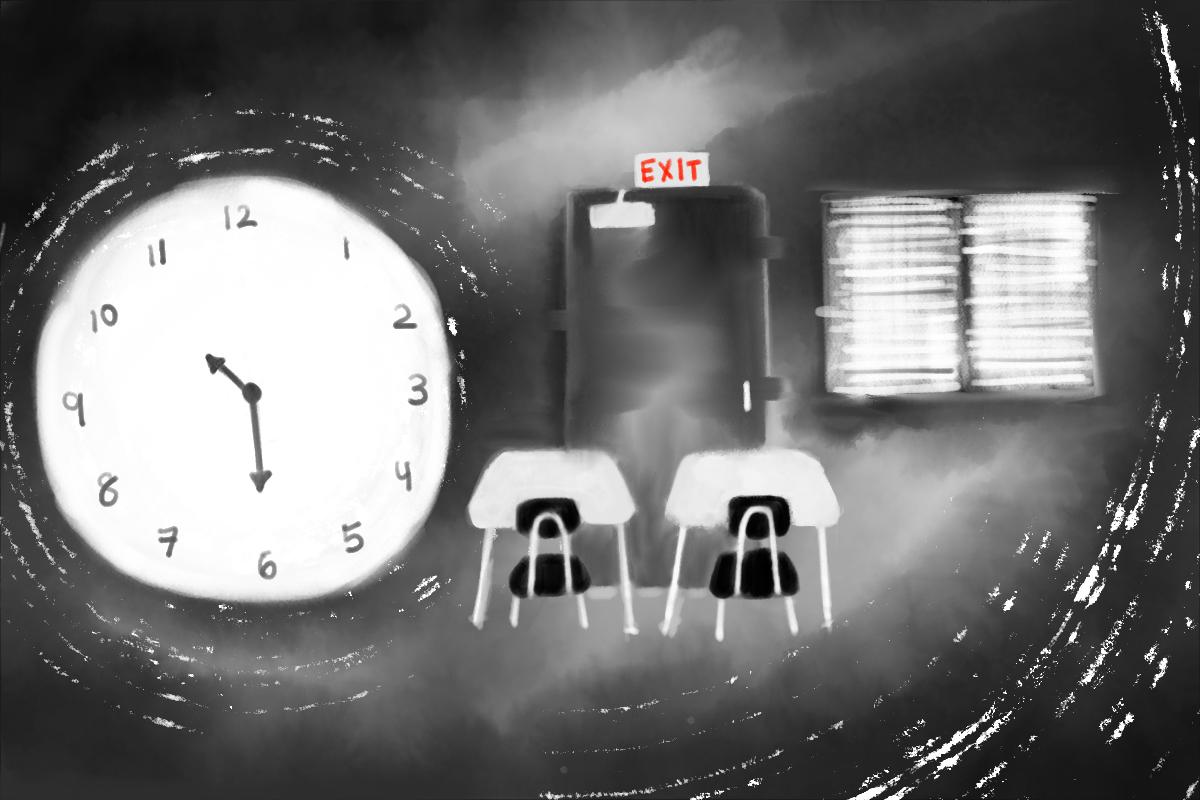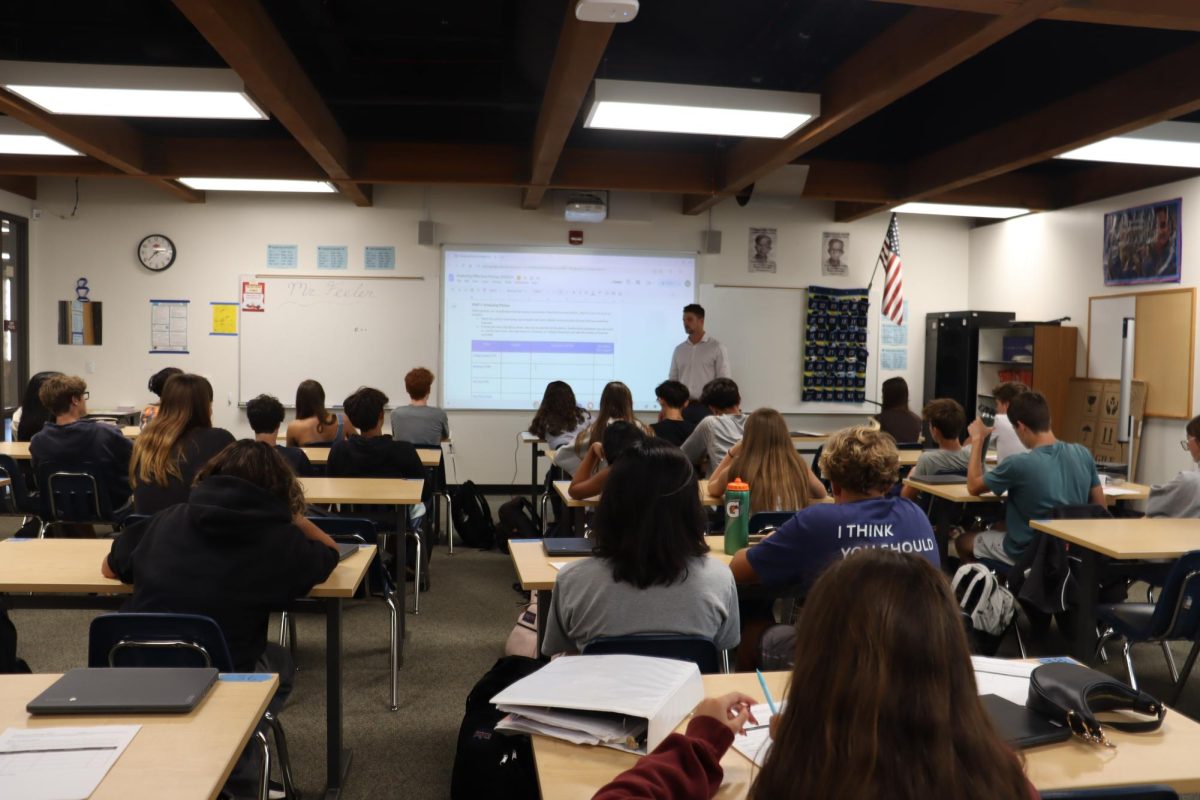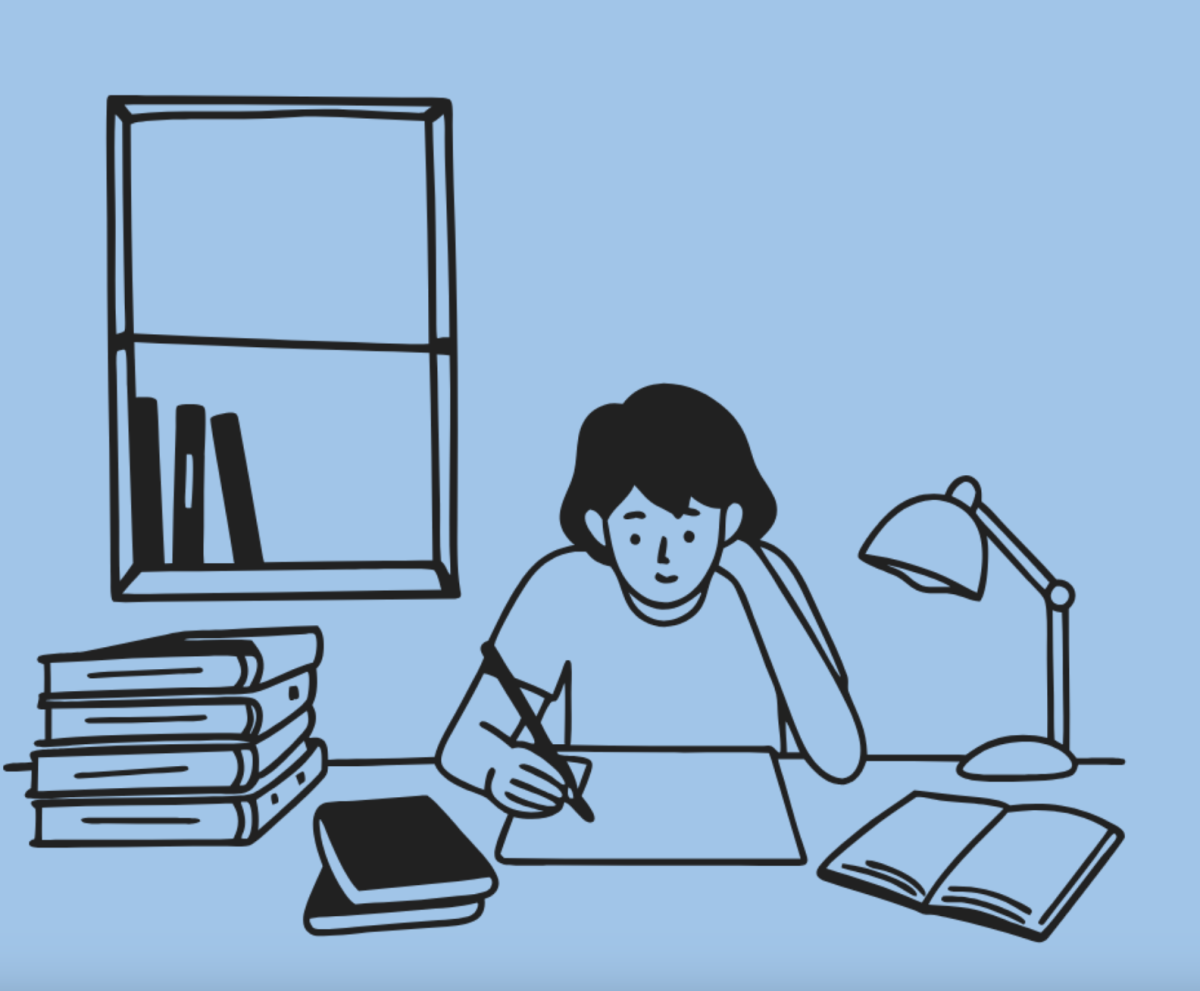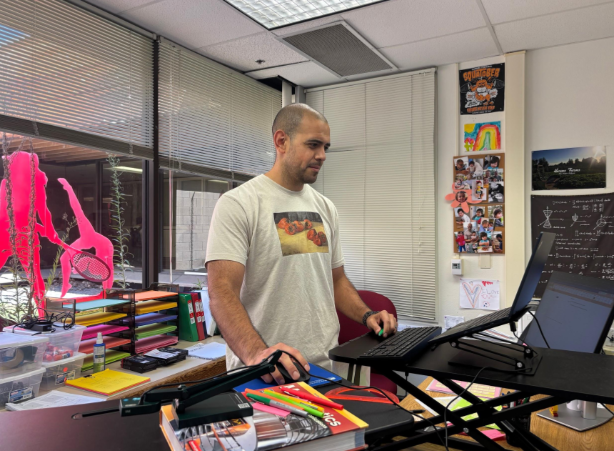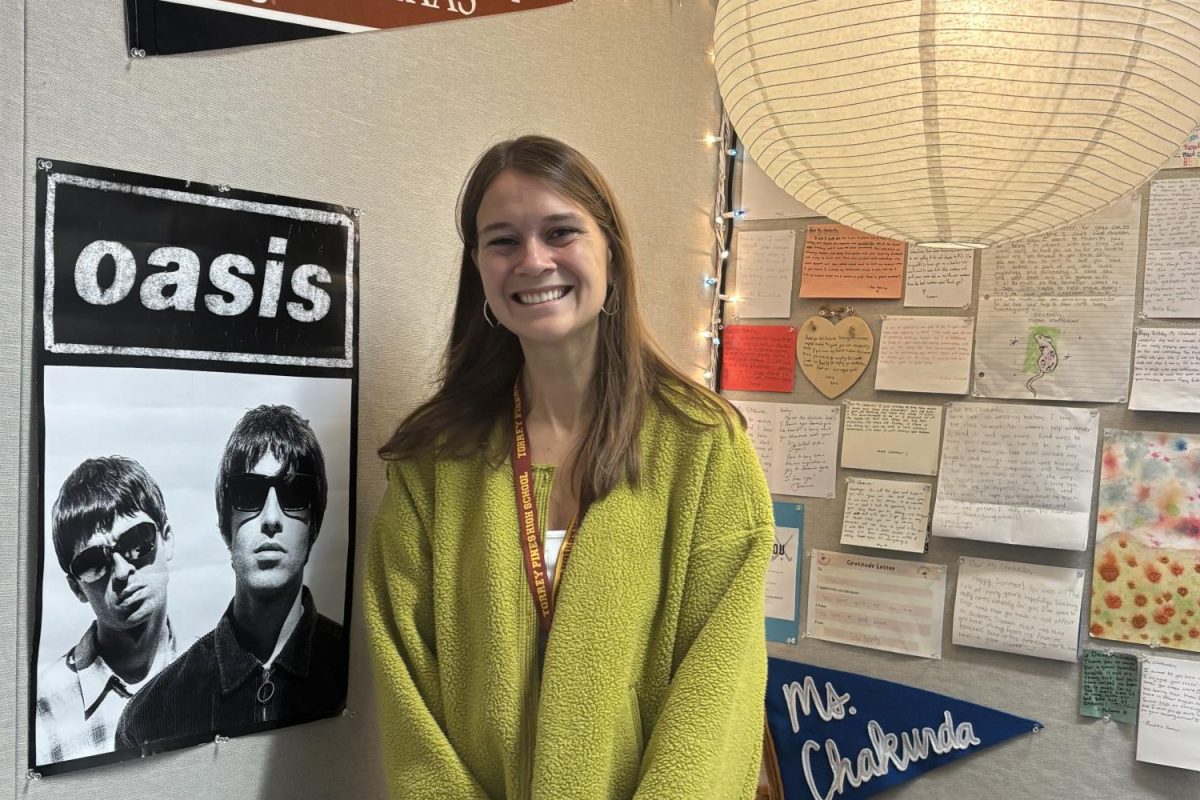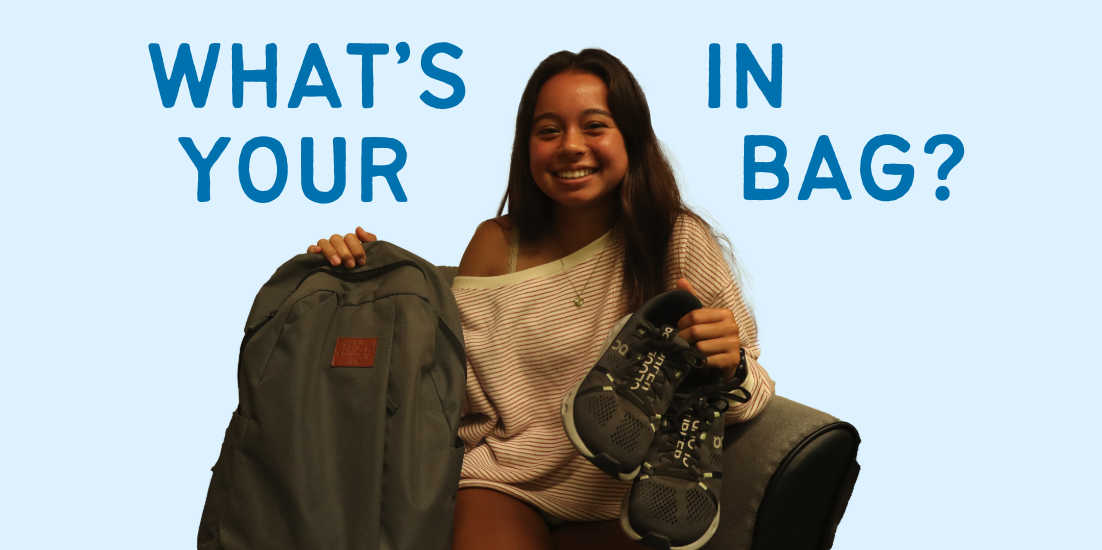It was like all of the school was in a slumber. The blinds were drawn. The lights turned off. Not a sound circulated through the hallways. But Torrey Pines was not napping. In fact, everyone was wide awake, painfully alert.
On Nov. 20, 2014 — almost exactly 10 years ago — the school went into a precautionary lockdown.
Marketing and Internship teacher James Anthony was in room 402, teaching marketing at the time. When he looks back on this experience, especially in the wake of increased instances of gun violence on school campuses, he simply said that he “prays a lot more.”
Following a threat on the social media platform Yik Yak that threatened to “shoot all at TP at 11:55,” the school called San Diego Police Department (SDPD) and went into lockdown. Images from the day show police cars blocking off the entrances to the school.
The students and staff did not witness any of this. They were stuck in classrooms from 10:30 a.m. until 1 p.m., when the first wave of students were released.
Jackie Niddrie, who teaches Intro to Law and Marketing, felt “fortunate.” She had a son on the football team at the time and said that she practically “fed the whole team.” As a result, she had snacks and water in her classroom, a luxury many of the other classrooms did not have.
“I remember I felt really fortunate because I happened to have a case of bottled water and I had a lot of snacks in the cupboard,” Niddrie said. “It went on for a few hours… then the issue became bathrooms. Kids legitimately needed to go to the bathroom… so they would bring police officers or security to the room and take one kid out and escort them to the bathroom at a time so they could get there safely and return safely.”
Kristina DeVico, who teaches Math ⅔ Honors, remembered having the same issue. The day after the lockdown, she and another teacher on campus made a purchase for their classrooms.
“I do remember the day after that happened, Ms. Soderlund (math teacher) and I both went and bought shower curtains and those orange Home Depot buckets because if we ever got stuck in that situation again, we needed to have a [restroom],” DeVico said. “It took the district until this year until they gave every teacher a black bucket.”
Teachers are also now required to have their cell phones out during class in case they need to be aware of emergency messages from administration. In 2014, the only communication they received from administration was through emails on their computers, according to Niddrie and DeVico.
Another change came in the form of curtains. Today, most classes have some form of curtains covering up viewing points. In 2014 during the lockdown, Anthony said that many classrooms had “partial windows” that needed to be “covered up.”
“Afterwards when administration debriefed and said what worked and what needed to be adjusted or looked at — as far as windows and vision into and out of the classroom, you can see today I still have a curtain over my little window — it gave us the chance in a non-drill setting to see where we were lacking,” Anthony said.
In addition to covering up windows, students and teachers also moved desks in front of the entrance to the classroom. In DeVico’s classroom, they discussed their plan should the worst come to fruition.
“The students and I put those [coverings] over the windows so no one could see in,” DeVico said. “We also put some heavy desks in front of the door, which opens inwards, so nobody could push their way in. We talked a little bit about what you would pick up and throw at somebody who got in, which was staplers… we were sitting there forever.”
In other classrooms across campus, similar procedures and discussions were taking place. Varsity basketball coach and English teacher Jacob Gilliam was a sophomore at the school when the lockdown occurred. He was in third period — world history class — when the lockdown began.
“It was a normal day,” Gilliam said. “It was hot and this was before we had AC here in the learning commons building. I remember we went into lockdown mode at the beginning of third period and you know how things go in high school, rumors were circulating as to why. I remember seeing one of my friends in the class… show me the Yik Yak where the threat was made. We were in there for a long time… we used desks to blockade the front door and then we were shut down but we had our phones so people were texting back and forth trying to see what was going on.”
As a teacher now, Gilliam says that he “wants to be aware of potential risk” in his own classroom.
The teachers are not the only ones who want to know what is going on around them. Gwen Love (10) is always aware of where her seat is in the classroom so she knows what to do in case of an emergency situation.
“I think everytime I walk into a class, in a way I’m sort of looking where I’m seated so that I can leave the fastest,” Love said.
The teachers and staff on campus involved in the lockdown had a plan. More than that, these teachers took responsibility for their students very seriously.
“I have kind of a fatherly duty in the classroom,” Anthony said. “The kids entrusted to me for that two hour block [are] my children. There’s a protective instinct… there was an unease in the pit of your stomach [on that day].”
Niddrie felt similarly.
“I do remember thinking I need to show that the school has a plan, I have a plan and I know what I’m supposed to do,” Niddrie said. “And I did feel trained that I knew what I was supposed to do… I remember wanting to present myself as in control to reassure the kids.”
Having a plan in place helps students feel safe on campus.
“I can tell when teachers actually care about safety,” Zak Kadri (12) said. “I can tell this school definitely cares about [students’ safety].”
Amelia Mazo (10), a Diversity Equity and Inclusion commissioner for ASB who also promotes the No Place for Hate program on campus, feels secure on campus as well.
“I feel safe even though it’s a very open school,” Mazo said. “I think the people around you make you feel safe.”
Mazo and her fellow DEI commissioner Bellina Tricarico (10) both believe that having a close-knit school community can limit instances of hate.
“I think the more people feel involved and connected to other people, the less likely they are to… rebel against them,” Tricarico said.
Mazo agreed.
“If you feel included in a community… you’re not going to try to do something against it because you’re part of it,” Mazo said.
The silver lining from this lockdown came in the form of a community response for Niddrie. After the lockdown, she went to the local Vons to buy donuts as a thank you to her students “for working as a team and coming together.” While she was there, she was approached by two members of the community.
“There were two elderly gentlemen out on their walk and I think I had my lanyard on and I was buying the donuts,” Niddrie said. “They said ‘are you a teacher at Torrey Pines? Were you there for the lockdown?’ and I said ‘yes,’ and they said ‘how did the kids do?’ and I said ‘they did so well I’m buying donuts to say thank you.’ They each pulled out 10 dollars and… they paid for the donuts… Good can come from bad. You never know.”


